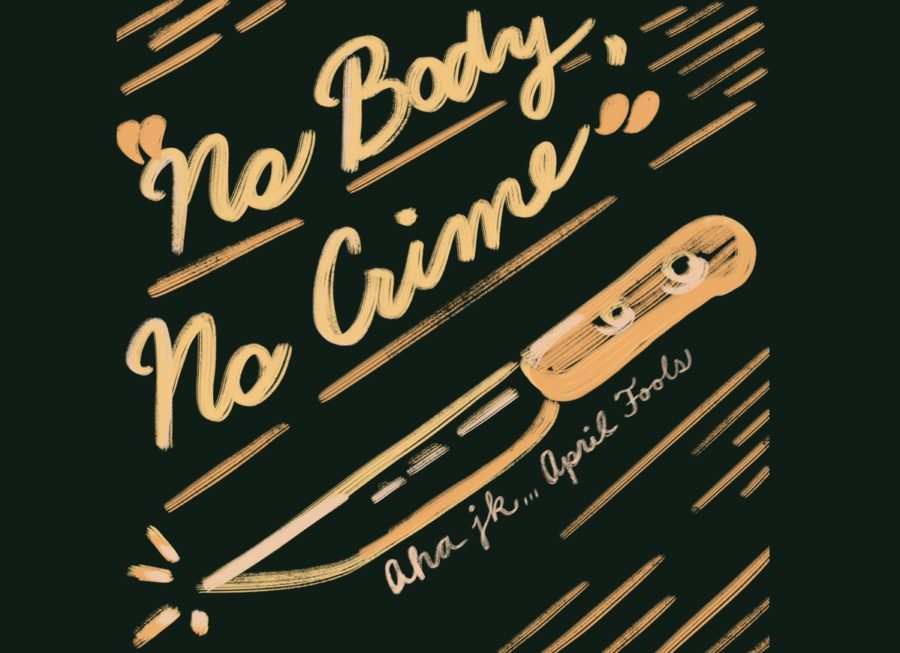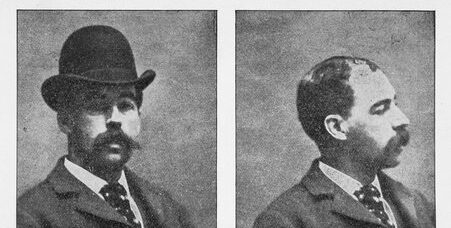Illustration by Jocelyn Burton
Featured image courtesy kat wilcox from Pexels
On February 24, 1986, Sherri Rasmussen was found dead by her husband John Ruetten at their home in Van Nuys, California.
The 27-year-old newlywed was shot three times and brutally beaten. She had been dead for hours by the time her husband found her and dialed 911.
To detectives, it appeared there was a struggle. According to Vanity Fair, “One of the room’s tall stereo speakers was knocked over and lying beside Sherri on the rug, its top flush against her head. A gray ceramic vase with a heavy base lay shattered on the floor. The top two shelves of the wooden display cabinet had been knocked askew, and an amplifier and receiver dangled forward on top of the television.” Additionally, blood was found on top of the CD player that was stacked at the bottom of the staircase, the front door and the east wall. Upstairs, the window to a sliding glass door was shattered.

Looking at Sherri, detectives noted a bite mark on her inner forearm and collected DNA samples. Two bullets were found in the body. The first shot fired went straight through her and was fatal, but the killer wanted to make sure she was dead. They used a blanket to muffle the sounds of the other two shots fired at point blank range into her chest.
During the investigation, authorities discovered two Latino men were breaking into homes in the area and had assaulted a woman. This was enough for the lead detective, Lyle Mayer, to draw up his conclusion according to Chilling Crimes.
Mayer explained to John that what had happened to Sherri was a burglary gone wrong. When Sherri’s parents were notified of her death the next day, they were immediately heartbroken but also angry. Why did they find out about their daughter’s death a day later? The first question that Nels Rasmussen, Sherri’s father, asked police was, “Have you checked out John’s ex-girlfriend, the lady cop?”
Film Daily details how Sherri confided in her father for weeks about this woman who was harassing her. The woman visited their home weeks before her wedding, multiple times, unannounced. During one of her visits, the woman was in an LAPD uniform and claimed to be on break. Sherri was becoming increasingly worried for her own safety and her fiancé’s loyalty.
This was not the last time the “lady cop” would make an appearance. The next time, she came to Sherri’s office and confronted her. Sherri did not hint to John that she was scared or intimidated about any of this but described the encounter to her father in detail.
It is no surprise that Nels wanted to bring this to the detective’s attention. Unfortunately, his concerns were dismissed, and Mayer stuck with his original claim that it was a botched burglary.
Sherri’s parents never gave up on finding her killer. While her husband John seemed to be moving on with his life, the Rasmussen’s put up a $10,000 reward and got Sherri’s case on the TV show “Murder One.” Additionally, Nels never stopped calling LAPD asking if they checked out the “lady cop” he mentioned from day one of the investigation. After hearing about DNA testing, Sherri’s family urged the department to run tests from samples they collected. They department claimed that they did not have the funds for this, so the family even offered to pay for the testing themselves.
Funding would not have been the only problem in trying to test DNA samples. The case records suggest “that one or more persons, during the initial investigation and continuing for the next 10 years, were not just disinclined to consider that one of their own had murdered Sherri Rasmussen but actively conspired to hide evidence that might have proved it,” according to Vanity Fair.
In 2001, the Cold Case Homicide Unit was created. Three years later, criminologist Jennifer Francis began working on Sherri’s case. Francis noticed that it was reported that a DNA swab was taken from the bite mark on Sherri’s forearm, but it was missing. She called the coroner’s office where evidence is typically kept while the case was still active. Unable to locate the swab, Francis searched the coroner’s freezer by hand and discovered exactly what she was looking for.
After sending out to get the DNA tested, results came back in 2005 stating that there were no hits in CODIS, but it could be confirmed that the bite was made by a woman. Unfortunately, this lead did not go far, and Sherri’s case was put back in storage until 2009 according to The Atlantic.
Still running on the fact that the killer was a woman, detectives concluded that the burglary was likely staged after Sherri was killed. They also noted that on November 19, 1987, the original detective made a note that: “John Ruetten called. Verified Stephanie Lazarus, PO, was former girlfriend.”
Detectives were careful when trying to get the DNA sample needed to compare Lazarus to the bite mark. They didn’t want anyone to know she was a suspect, especially Lazarus herself. Internal Affairs Group — Special Operations Section obtained her DNA from a plastic cup she used and sent it to the lab.
Two days later, it was confirmed that Lazarus’ DNA matched the DNA found on Sherri’s arm the day she was killed.
In June of 2009, she was arrested, and in March of 2012, Lazarus was convicted of Sherri’s murder and sentenced to 27 years in prison. Had detectives taken Nels seriously when he told them to look into “the lady cop” a day after Sherri was murdered, it may not have taken 23 years for her case to be resolved.


















